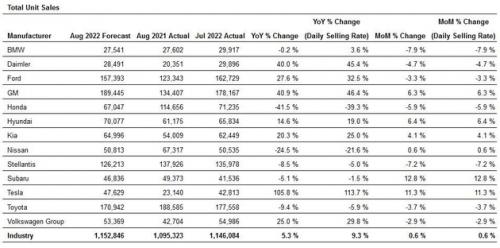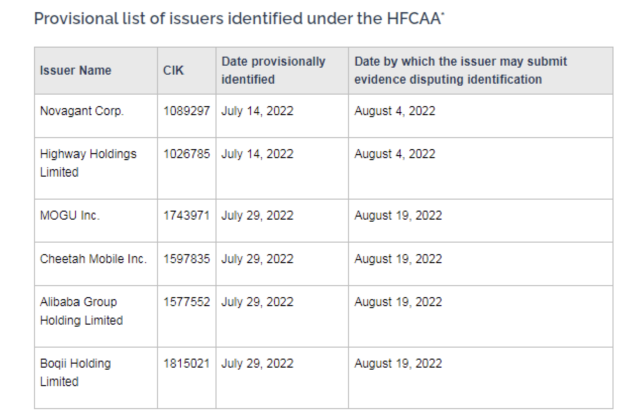your current location is:Home > TechnologyHomeTechnology
Blue Origin's "New Shepard" rocket failed to launch and crashed, the capsule successfully escaped
"It seems that our flight today (September 12) encountered an abnormality." On September 12, the "New Shepard" rocket of Bezos' space company "Blue Origin" was executing It malfunctioned during an uncrewed mission and crashed in a designated area of Texas.
This is the first time that Blue Origin has suffered a rocket launch failure, and it is also the first major incident since Blue Origin opened its services to the public. At present, the cause of the failure is under investigation, and the Federal Aviation Administration has suspended the follow-up launch plan of "Blue Origin".
The New Shepard rocket is a small suborbital rocket that can only send people to the edge of space in short flights. Bezos himself was one of four passengers on the New Shepard rocket's first manned space test flight last July.
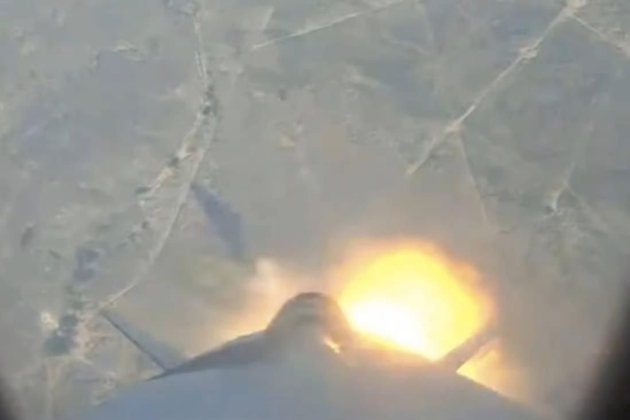 On September 12, the rocket's first-stage booster engine spewed out a huge cloud of yellow flames. Picture from twitter
On September 12, the rocket's first-stage booster engine spewed out a huge cloud of yellow flames. Picture from twitterAccording to reports from Reuters and the Associated Press, on the morning of September 12, local time, the”New Shepard” rocket carried out an unmanned mission and launched from the company’s”Launch Site One” in Texas. null. The launch, New Shepard's 23rd mission, is designed to send NASA-funded experiments and other payloads into suborbital space to float in microgravity for minutes.
However, just one minute after liftoff, about 5 miles (8,050 meters) above the ground, the rocket's booster engine suddenly "accidentally caught fire." Immediately, the capsule escape system was successfully activated, separating the unmanned capsule from the booster. The booster then crashed to the ground, and the capsule opened its parachute and landed safely with no casualties.
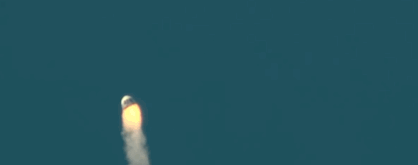 The video released by "Blue Origin" on Twitter on September 12 showed that the rocket launch failed. The capsule triggers the system, opening three drag parachutes to slow its fall.
The video released by "Blue Origin" on Twitter on September 12 showed that the rocket launch failed. The capsule triggers the system, opening three drag parachutes to slow its fall."It seems that our flight today (September 12) encountered an abnormality," a commentator said in the live broadcast. "This is an emergency, and we don't know any details yet."
The rocket's booster crashed in a designated area, according to the Federal Aviation Administration (FAA), which oversees and manages launch site safety. At present, the department has launched an investigation and suspended the "Blue Origin" follow-up launch plan until it is determined whether any systems, processes or procedures related to the accident will affect public safety.

"Blue Origin" also confirmed on social media that day that the rocket booster failed, but "the escape system is operating as designed." It added: "During today's flight, the capsule escape system successfully separated the capsule from the booster. The booster eventually hit the ground. No reports of casualties."
According to the report, "Blue Origin" is a space company founded by Amazon founder and former CEO Jeff Bezos. The New Shepard rocket was named after the first American astronaut in space, Alan Shepard. The New Shepard rocket is a small rocket that can only enter suborbital through short flights. The original intention of its design is to send astronauts and scientific research loads into space. The flight altitude of the rocket can reach about 107 kilometers, exceeding the "Carmen line" about 100 kilometers above the surface. boundary.
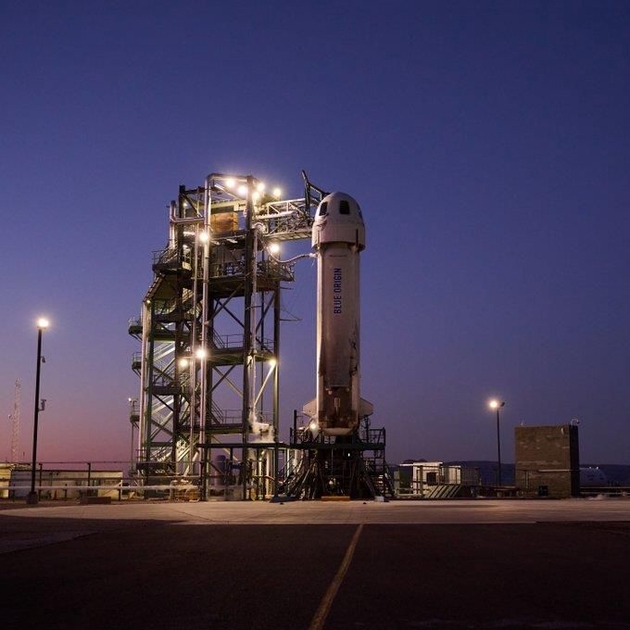 The New Shepard rocket before launch on September 12. Picture from "Blue Origin" Twitter
The New Shepard rocket before launch on September 12. Picture from "Blue Origin" TwitterThe "New Shepard" rocket entity is 18 meters high, can return autonomously and can be reused. On top of the rocket is a manned capsule with six huge windows, tailored for space tourism.
During New Shepard's first manned test flight on July 20, 2021, nearly 7,600 people from 159 countries registered to bid for seats, and the first seat was auctioned off for $28 million. Bezos was also one of four passengers on the mission.
The failed mission, code-named NS-23, was the 23rd space test flight of the New Shepard rocket. Prior to this test flight, the New Shepard rocket had successfully completed 22 consecutive flight tests, including three escape tests, indicating that the capsule's escape system could be activated safely at any stage of flight.
The rocket that crashed had previously flown eight missions (though it's unclear if any of those past missions had carried people).
In the suborbital space tourism business of "Blue Origin", this (rocket-capsule) system has carried a total of 31 people. Those paying customers are launched to the edge of space, about 62 miles (99,800 meters) high, and enjoy a few minutes of microgravity at the edge of space, before their capsule returns to the ground by parachute.
related articles
Article Comments (0)
- This article has not received comments yet, hurry up and grab the first frame~






